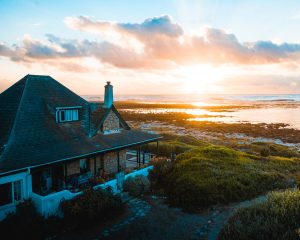The need for great quality homes has never wavered during the pandemic. While one cannot help but see the easing of pandemic-induced restrictions and rising economic activities as a boost for the residential sector (especially condominium rental), the overall resilience of the residential sector comes from the fact that houses are a necessity and fill the basic need for safety, security, and comfort.
During the last two years, people have spent more time within their homes than they have ever since their childhood. This has spurred the requirements for spacious, open, and green homes to address needs such as work-from-home setups, greater dependence on energy and technology, prevention of cabin fever, and wellness.
Choosing a home, whether a condominium or a house and lot, still comes down to good location. A place or hometown with proper access to essential establishments such as convenience stores, markets, and institutions such as schools, hospitals, government centers, and the like is probably one of the best homeowners’ realizations. But the adage of location, location, location has taken a new meaning after the pandemic experience. While people want to be within reach of convenience, there now also seems to be greater desire for locating near places of leisure, nature, beach, and mountains.
When we asked high-income Filipino buyers whether the pandemic has encouraged them to buy a second home, 41% said yes – one of the highest in Asia Pacific*. We have seen “workations” becoming a trend where people stay in places for a different scenery or breath of fresh air away from a locked down city. Interestingly, the team has seen an increased demand in leisure destinations mostly from higher-income buyers.
The need for second homes is likely to stay, caused by a myriad of factors. The improvements in infrastructure are one, cutting down on travel time between Metro Manila and destinations such as Batangas, Baguio, La Union, Subic, and places of interest. WFH is another, having made the last two years a great big experiment and proving that WFH can work for certain sectors. Lastly, health and wellness have become a priority.
Shifting and returning preferences
Meanwhile, we anticipate movements in other sectors of the market, too. The condominium rental market in Metro Manila will likely pick up this year as a result of higher vaccination rate, re-opening of the country’s borders, and return-to-office programs.
In the primary sale market of condominiums in Metro Manila, average prices have increased slightly by 1% to PHP202,000/sqm in Q4 2021 versus the previous quarter. There is also a greater appetite for bigger cut units (such as 2BR and 3BR), driven by families upgrading their homes and high-income parents and breadwinners providing real estate as inheritance (“pamana”); and OFWs. Overseas remittances, which have been sources of funds to acquire residential properties and drive consumption, grew by 5.1% in 2021 versus the previous year.
The recovery across the economy in 2022 will likely impact home prices, which have stalled during the pandemic. As prices bounce back this year, buying one’s primary or second home is increasingly becoming a “now or never” kind of situation.
*Global Buyer Survey: The Philippine Edition 2021

